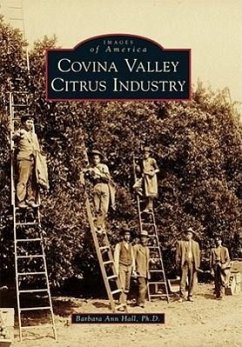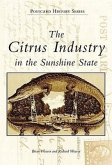Drawn by the California dream of golden sunshine and promise, many settlers came to the Covina Valley, where, after clearing the rocks, sagebrush, and cactus, they found rich alluvial soil. With the addition of water, everything grew in abundance. Citrus gradually became the best cash crop. This is the story of the men and women who made the citrus industry work in and around Covina, how they founded towns and eventually planted 25,000 acres of oranges, lemons, limes, and grapefruits. They endured droughts, floods, freezes, insect invasions, and unscrupulous buyers who almost ruined them financially. Together they developed water resources and the first stockholder-owned citrus cooperative, and brought railroads, transforming the Covina Valley into a major citrus producing and processing center.
Bitte wählen Sie Ihr Anliegen aus.
Rechnungen
Retourenschein anfordern
Bestellstatus
Storno





